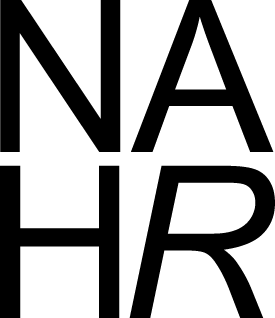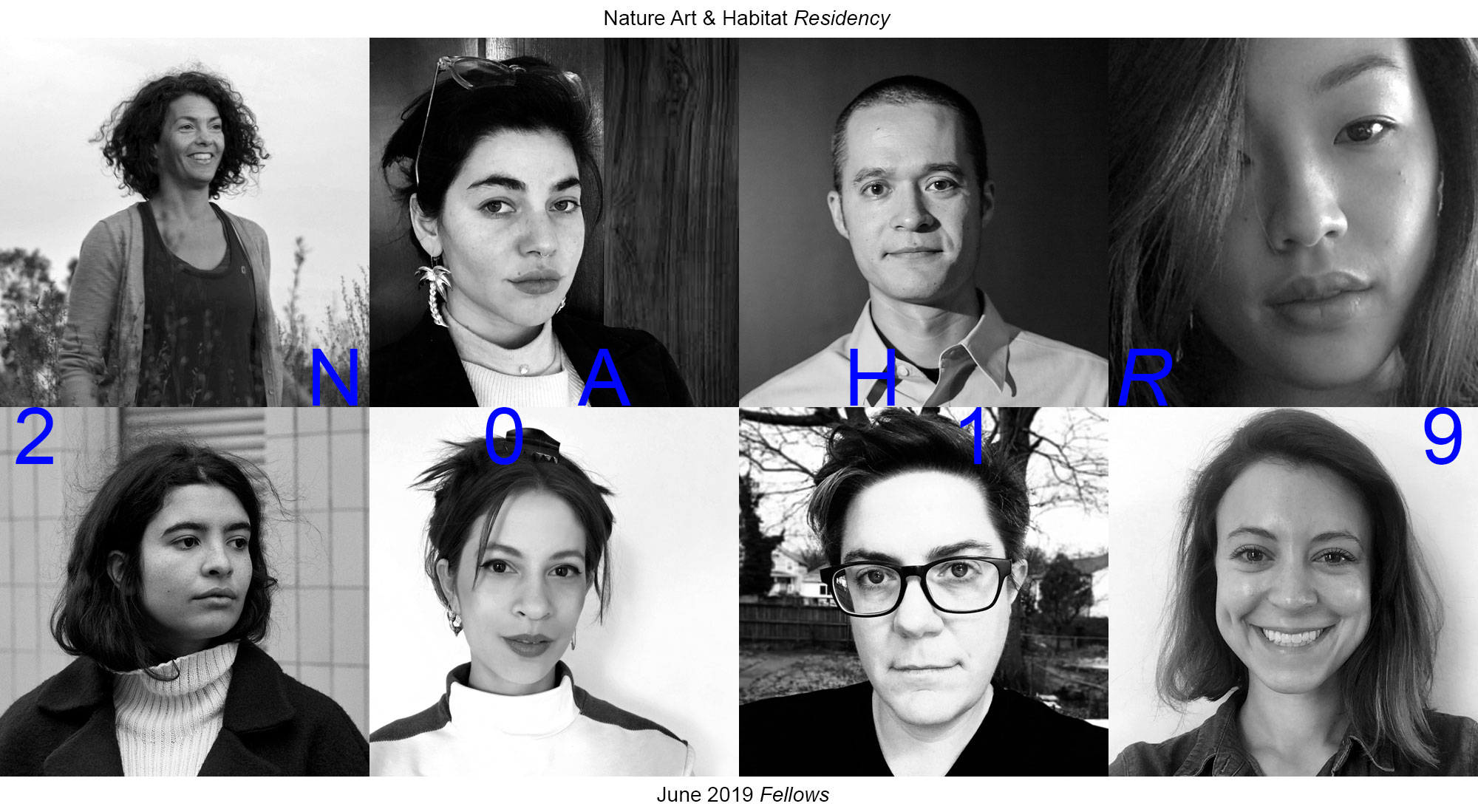2019
 It led me to make all sorts of connections between nature and art and habitat, and it led me to question things related to that
It led me to make all sorts of connections between nature and art and habitat, and it led me to question things related to that(Katie De Bari, August 7th, 2020, NAH_Stories.
Reference:
De Bari, K. (2020, 7 August 2020) NAH_Stories: Katie De Bari/Interviewer: L. Coleman. NAH_Stories, Nature, Art & Habitat Residency.
Katie De Bari
USA
Casonsèi: Arte Pastorale della Regione Alpina. CAPRA
How can I physically respond to the cheese economy in Val Taleggio? In dancing the making of Casonsèi, the first meal I had in Sottochiesa (made by Luisa), I celebrate a dish of iterations in name and filling, made with locally gathered ingredients, which also contribute to the cheese chain. By wearing a red nose, I also explore the evolving character of the Arlecchino mask. By dancing at different altitudes, I speculate about the future of species impacted by climate change. By dancing across different mountains, I nod to future changes in what is rooted where. Dancing the recipe straight is acknowledging the linear. Dancing the recipe in retrograde, restructured, and resequenced, allows for mystery, ambiguity, and the portrayal of the non-linear. All that aside...where are the goats?
Katie De Bari is a performing artist and choreographer. Katie uses theater and dance to research new ways of acknowledging the nonhuman. As choreographer Annie B Parson says, “All structures can be choreographic forms,” and Katie is excited to experiment with embodying the landscape and partnering with other species. Katie’s recent performance work, as part of various collectives based in New York City, has been shown at Frederick Loewe Theater, Downtown Playwrights, and Hudson Guild Theater. She received her BFA in Drama (Experimental Theater) from New York University.
USA
Casonsèi: Arte Pastorale della Regione Alpina. CAPRA
How can I physically respond to the cheese economy in Val Taleggio? In dancing the making of Casonsèi, the first meal I had in Sottochiesa (made by Luisa), I celebrate a dish of iterations in name and filling, made with locally gathered ingredients, which also contribute to the cheese chain. By wearing a red nose, I also explore the evolving character of the Arlecchino mask. By dancing at different altitudes, I speculate about the future of species impacted by climate change. By dancing across different mountains, I nod to future changes in what is rooted where. Dancing the recipe straight is acknowledging the linear. Dancing the recipe in retrograde, restructured, and resequenced, allows for mystery, ambiguity, and the portrayal of the non-linear. All that aside...where are the goats?
Katie De Bari is a performing artist and choreographer. Katie uses theater and dance to research new ways of acknowledging the nonhuman. As choreographer Annie B Parson says, “All structures can be choreographic forms,” and Katie is excited to experiment with embodying the landscape and partnering with other species. Katie’s recent performance work, as part of various collectives based in New York City, has been shown at Frederick Loewe Theater, Downtown Playwrights, and Hudson Guild Theater. She received her BFA in Drama (Experimental Theater) from New York University.
Casonsèi: Arte Pastorale della Regione Alpina. CAPRA
Come posso rispondere fisicamente all'economia del formaggio in Val Taleggio? Nel ballare la realizzazione di Casonsèi, il primo pasto che ho fatto a Sottochiesa (prodotto da Luisa), celebro un piatto di iterazioni nel nome e nel ripieno, realizzato con ingredienti raccolti localmente, che contribuiscono anche alla catena del formaggio. Indossando un naso rosso, esploro anche l’evoluzione della maschera Arlecchino. Ballando a diverse altitudini, ipotizzo il futuro delle specie colpite dai cambiamenti climatici. Danzando in montagne diverse, annuisco ai cambiamenti ed a ciò che è radicato e dove. Ballare la ricetta in modo diretto è riconoscere la linearità. Ballare la ricetta in modo retrogrado, ristrutturato e ri-sequenziato, consente il mistero, l'ambiguità e la rappresentazione del non lineare. A parte tutto... dove sono le capre?
Katie De Bari è una performing artistf e coreografa. usa il teatro e la danza per cercare nuovi modi di riconoscere il non umano. Come dice la coreografa Annie B Parson, "Tutte le strutture possono essere forme coreografiche" e Katie è entusiasta di sperimentare l'incarnazione del paesaggio e la collaborazione con altre specie. Il recente lavoro di Katie, come parte di vari collettivi presenti a New York City, è stato mostrato al Frederick Loewe Theatre, Downtown Playwrights e Hudson Guild Theatre. Ha ricevuto il suo BFA in Drama (Experimental Theatre) dalla New York University.
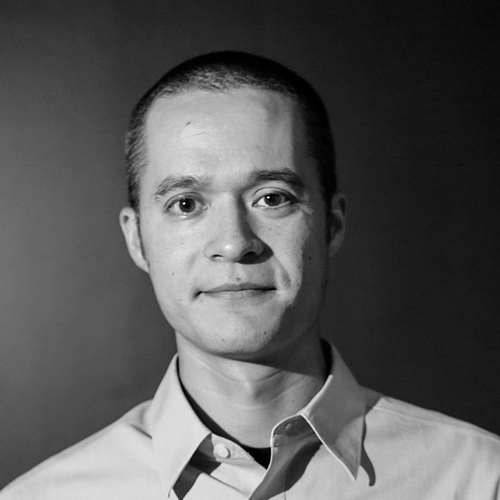 It was a really defined split between the research and the making…It was this really great mixture of having your cake and eating it too, having that outdoor experience being so at the root of what I was doing.
It was a really defined split between the research and the making…It was this really great mixture of having your cake and eating it too, having that outdoor experience being so at the root of what I was doing.Talking about animals and coexistence and nature…how are these things working together? How might they work together? How have they in the past? What are we doing now that might be an opportunity for change? I think the residency gave me the opportunity to go very deep in that world because you’re literally living in the mountains…and it gives you that time and space to really push forward a personal project or what your personal manifestation of what your ideas might be.
Reference: Chan, D.(2020, 19 July 2020)NAH_Stories/Interviewer: Katie de Bari. NAH_Stories, Nature, Art & Habitat Residency.
David Chan
Los Angeles, USA
Ground Truth: Grasses and Pastures of Val Taleggio
Ground Truth is an invitation to interface with the Val Taleggio region through an anthropomorphized version of its grasses and pastures. The identity of the valley has been informed through personal documentation of extensive trekking throughout the region. This immersive experiential process of travelling between pastures is a fictional embodiment of transhumance. The primary outcome of this project is a web based interactive design fiction in the form of a conversational bot. To build this interface, findings were processed and programmed into the natural language understanding artificial intelligence of IBM Watson. This bio-inspired digital story is further supported by a website hosting images, video, and GPS mapping of the field research.
David Chan is a creative technologist based in Los Angeles, CA whose work combines design research, emerging technologies, and storytelling. His curiosity has led to critical design prototypes through systems thinking, with a focus on sustainability and digital identities. David continues to explore and create as an MFA candidate in the Media Design Practices program at ArtCenter College of Design.
Los Angeles, USA
Ground Truth: Grasses and Pastures of Val Taleggio
Ground Truth is an invitation to interface with the Val Taleggio region through an anthropomorphized version of its grasses and pastures. The identity of the valley has been informed through personal documentation of extensive trekking throughout the region. This immersive experiential process of travelling between pastures is a fictional embodiment of transhumance. The primary outcome of this project is a web based interactive design fiction in the form of a conversational bot. To build this interface, findings were processed and programmed into the natural language understanding artificial intelligence of IBM Watson. This bio-inspired digital story is further supported by a website hosting images, video, and GPS mapping of the field research.
David Chan is a creative technologist based in Los Angeles, CA whose work combines design research, emerging technologies, and storytelling. His curiosity has led to critical design prototypes through systems thinking, with a focus on sustainability and digital identities. David continues to explore and create as an MFA candidate in the Media Design Practices program at ArtCenter College of Design.
Realtà di base: Erbe e pascoli della Val Taleggio
Realtà di base è un invito ad interfacciarsi con la Val Taleggio attraverso una versione antropomorfizzata delle sue erbe e dei suoi pascoli. L'identità della valle è stata studiata attraverso lunghe camminate in tutta la regione, che hanno portato ad acquisire competenze personali. Questo viaggio tra i pascoli è un processo esperienziale immersivo, un'incarnazione fittizia della transumanza. Il progetto è una fiction di design interattivo su piattaforma web, sotto forma di bot di conversazione. L’ interfaccia e’ stato construita usando IBM Watson, sistema di Intelligenza Artificiale che elabora i dati, analizza i contenuti, e permette la visualizzazione dei risultati. Questa narrazione digitale bio-ispirata è ulteriormente supportata da un sito Web che ospita immagini, video e mappe GPS della ricerca fatta sul territorio.
David Chan è un tecnologo creativo che vive a Los Angeles, in California, il cui lavoro combina ricerche di design, tecnologie emergenti e storytelling. La sua curiosità lo ha portato a creare prototipi di design critici attraverso il pensiero sistemico, con particolare attenzione alla sostenibilità e alle identità digitali. David continua ad esplorare e fare ricerca, e completerà l’ MFA in Media Design Practices presso l'ArtCenter College of Design nel 2020.

Anais Hazo
Berlin, Germany
Always the world - Interconnectedness through hands and genuine food
The project is embedded in milk culture(s), diversity, flora, and simple human action. I am collecting milk from the valley, and turning it into cheese, directly in my studio, with the help of various ancient milk cultures. Those cheeses are infused with the flora of the region: all of them contain flowers and vegetal extracts collected in the Val Taleggio. Along with some home-cultured bread, those edible artifacts will be displayed as a performative installation, tasted and shared with the community, during the open studio day. So the milk, the flowers and the bacteria can infuse within the people of this land. The work also includes a wide documentation of the processes, mainly in the shape of photographs and texts. This documentation will be turned into an artist publication. The publication aims to explain the various dimensions of the work to the public, and to remain in the valley as an open archive - the public will be invited to grow and enrich it according to their will.
Anaïs Hazo is a French trans-disciplinary artist and researcher, working at the intersection of art, environmentalism and design. She is mainly interested in ways of living, food, taste, images, design, nature, anthropology, language and philosophy. Her practices include food making and studies, photography, poetry and publishing. She is based in Berlin
Berlin, Germany
Always the world - Interconnectedness through hands and genuine food
The project is embedded in milk culture(s), diversity, flora, and simple human action. I am collecting milk from the valley, and turning it into cheese, directly in my studio, with the help of various ancient milk cultures. Those cheeses are infused with the flora of the region: all of them contain flowers and vegetal extracts collected in the Val Taleggio. Along with some home-cultured bread, those edible artifacts will be displayed as a performative installation, tasted and shared with the community, during the open studio day. So the milk, the flowers and the bacteria can infuse within the people of this land. The work also includes a wide documentation of the processes, mainly in the shape of photographs and texts. This documentation will be turned into an artist publication. The publication aims to explain the various dimensions of the work to the public, and to remain in the valley as an open archive - the public will be invited to grow and enrich it according to their will.
Anaïs Hazo is a French trans-disciplinary artist and researcher, working at the intersection of art, environmentalism and design. She is mainly interested in ways of living, food, taste, images, design, nature, anthropology, language and philosophy. Her practices include food making and studies, photography, poetry and publishing. She is based in Berlin
Sempre il mondo - Interconnessione attraverso le mani e il cibo genuino
Il progetto è profodamente inserito nella cultura(e) del latte, nella biodiversità, nella flora e nella semplice azione umana. Raccolgo il latte prodotto nella Valle e lo trasformo in formaggio, direttamente nel mio studio, utilizzando antiche competenze di produzione casearia. Questi formaggi si fondono con la flora della regione: tutti contengono fiori ed estratti vegetali raccolti in Val Taleggio. Insieme a del pane fatto in casa, questi prodotti commestibili, realizzati artigianalmente, verranno presentati come un'installazione artistica, degustati e condivisi con la comunità, durante la giornata di Open studio. Quindi il latte, i fiori e i batteri possono fondersi con le persone che popolano questa terra. Il lavoro comprende anche un'ampia documentazione dei processi produttivi, principalmente sotto forma di fotografie e testi, che sarà successivamente trasformata in una pubblicazione artistica. La pubblicazione si propone di spiegare i vari aspetti del lavoro al pubblico e di rimanere nella Valle come un archivio attivo: la popolazione e i visitatori saranno invitati ad accrescerla e ad arricchirla secondo la loro volontà.
Anaïs Hazo è un'artista e ricercatrice trans-diciplinare francese che lavora tra arte, ambientalismo e design. Si interessa principalmente ai modi di vivere, al cibo, al gusto, alle immagini, al design, alla natura, all'antropologia, alla lingua e alla filosofia. Il suo lavoro include lo studio e la produzione di cibo, la fotografia, la poesia e l'editoria. Vive a Berlino.
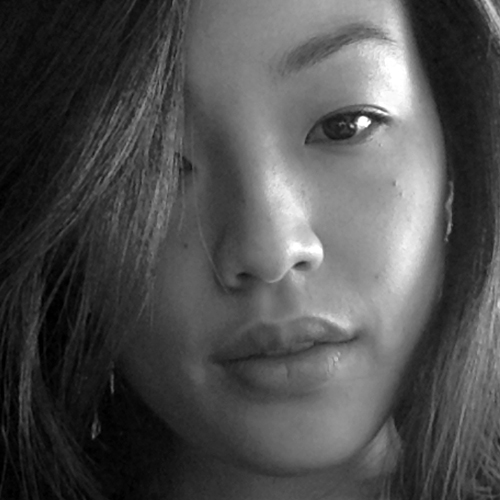
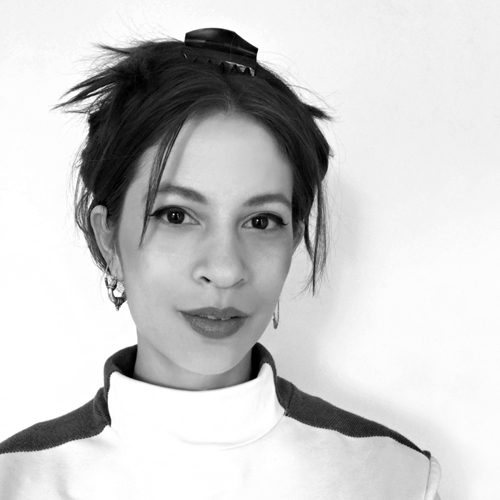
Ming Lin & Heidi Maribut
Hong Kong, China / Copenhagen, Denmark
RADIO P.D.O. (D.O.P.) Community Radio
This project brings together a diverse range of materials exploring, questioning, and subverting static and homogenizing narratives of the “Protected Designation of Origin” (P.D.O) in Taleggio Valley. The programme takes as it’s starting point a conception of heritage as a matter of ‘re-invention’ that builds upon existing traditions, but allows such definition to be expansive in scope. Inspired by the amateur “Ham” radio technology which typically harnesses the network for the purposes of non-commercial exchange, and regarding the antenna as both a symbol and device—as the highest place and nodal point witnessing a ‘co-naturality’ between human networks and natural geography of a region—intangible radio wave frequencies allow other narratives from within the valley to filter through. Taking poetic liberties with the abbreviation P.D.O., each segment of the programme explores several moments defining an elusive “community” which, in light of the tensions produced when local production and life ways run up against the demands of the global economy, are frequently thrown into flux. In both form and subject-matter, RADIO P.D.O. transgresses territorial and cultural boundaries in order to move away from a static or belabored rhetoric of authenticity and closer to definitions inspired by movement, hybridity and itinerancy.
A collaboration between Ming Lin, a writer-researcher interested in global production chains, and Heidi Maribut, a visual artist looking at identity within globalization.
Listen to: RADIO P.D.O. (D.O.P.) Community Radio
Hong Kong, China / Copenhagen, Denmark
RADIO P.D.O. (D.O.P.) Community Radio
This project brings together a diverse range of materials exploring, questioning, and subverting static and homogenizing narratives of the “Protected Designation of Origin” (P.D.O) in Taleggio Valley. The programme takes as it’s starting point a conception of heritage as a matter of ‘re-invention’ that builds upon existing traditions, but allows such definition to be expansive in scope. Inspired by the amateur “Ham” radio technology which typically harnesses the network for the purposes of non-commercial exchange, and regarding the antenna as both a symbol and device—as the highest place and nodal point witnessing a ‘co-naturality’ between human networks and natural geography of a region—intangible radio wave frequencies allow other narratives from within the valley to filter through. Taking poetic liberties with the abbreviation P.D.O., each segment of the programme explores several moments defining an elusive “community” which, in light of the tensions produced when local production and life ways run up against the demands of the global economy, are frequently thrown into flux. In both form and subject-matter, RADIO P.D.O. transgresses territorial and cultural boundaries in order to move away from a static or belabored rhetoric of authenticity and closer to definitions inspired by movement, hybridity and itinerancy.
A collaboration between Ming Lin, a writer-researcher interested in global production chains, and Heidi Maribut, a visual artist looking at identity within globalization.
Listen to: RADIO P.D.O. (D.O.P.) Community Radio
RADIO P.D.O. Radio comunitaria
RADIO P.D.O. riunisce una vasta gamma di materiali che esplorano, mettono in discussione e sovvertono le narrazioni statiche e omogeneizzanti della "Denominazione di Origine Protetta" (D.O.P) nella Valle del Taleggio. Il programma prende come punto di partenza una concezione del patrimonio come una questione di "re-invenzione" che si basa su tradizioni esistenti, ma consente a tale definizione di essere espansiva nel suo ambito. Ispirato alla tecnologia radioamatoriale "Ham" che tipicamente sfrutta la rete ai fini dello scambio non commerciale, e considerando l'antenna sia come simbolo, sia come dispositivo, come il posto più alto e il punto nodale, che testimonia una "co-naturalità" tra i network umani e la geografia naturale di una regione - le frequenze di onde radio intangibili permettono ad altre narrazioni dall'interno della valle di filtrare. Prendendo libertà poetiche con la sigla DOP, ogni segmento del programma esplora diversi momenti che definiscono una "community" elusiva che, alla luce delle tensioni prodotte quando la produzione locale e le vie della vita incontrano le esigenze dell'economia globale, vengono spesso gettati nel flusso. Sia nella forma che nell'oggetto, RADIO P.D.O. trasgredisce i confini territoriali e culturali per allontanarsi da una retorica statica o insinuata di autenticità e avvicinarsi a definizioni ispirate al movimento, all'ibridazione e all'itineranza.
Una collaborazione tra Ming Lin, scrittrice-ricercatrice interessata alle catene di produzione globali, e Heidi Maribut, artista visiva che guarda all'identità all'interno della globalizzazione.
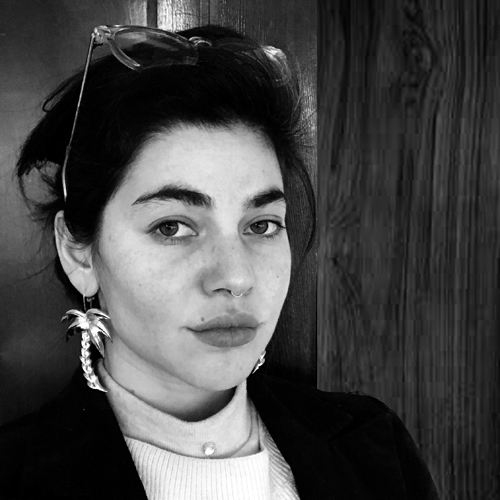
Sarah Kantrowitz
USA
Software Cheese: A dairy spa in the mountains.
This work is a prototype for a processing facility in modern regenerative cheesemaking. The simple, open-air plant offers the pleasures of making cheese in a liquid exchange, humbly inviting humans into new practices of ecological communion. Care for the milk and its microbes joins with care for the body joins with care for the built environment of the processing facility. Treatments include foot massage for curd cutting, face mask for straining whey, and steam bath for warming after laying cheese to rest in the cold wet of the Grotta dei Partigiani. The liberatory gay dairy spa endeavors to hybridize across modern and traditional production modalities, to accept the limitations of both with grace, and to whisper of new, powerfully nourishing relational logics for commercial food processing. Currently accepting investors to partner in construction of permanent facility; contact sarah.e.kantrowitz@gmail.com
Sarah Kantrowitz is a designer working at the intersection of food justice and the built environment, primarily through the design of infrastructure for stronger regional food systems. Current work includes supporting small businesses by better attuning food safety regulations to the dynamics of moisture migration and microbial growth in open fermentation facilities. She holds a Master of Architecture from the Harvard Graduate School of Design and a Bachelor of Arts in Linguistics from Reed College.
USA
Software Cheese: A dairy spa in the mountains.
This work is a prototype for a processing facility in modern regenerative cheesemaking. The simple, open-air plant offers the pleasures of making cheese in a liquid exchange, humbly inviting humans into new practices of ecological communion. Care for the milk and its microbes joins with care for the body joins with care for the built environment of the processing facility. Treatments include foot massage for curd cutting, face mask for straining whey, and steam bath for warming after laying cheese to rest in the cold wet of the Grotta dei Partigiani. The liberatory gay dairy spa endeavors to hybridize across modern and traditional production modalities, to accept the limitations of both with grace, and to whisper of new, powerfully nourishing relational logics for commercial food processing. Currently accepting investors to partner in construction of permanent facility; contact sarah.e.kantrowitz@gmail.com
Sarah Kantrowitz is a designer working at the intersection of food justice and the built environment, primarily through the design of infrastructure for stronger regional food systems. Current work includes supporting small businesses by better attuning food safety regulations to the dynamics of moisture migration and microbial growth in open fermentation facilities. She holds a Master of Architecture from the Harvard Graduate School of Design and a Bachelor of Arts in Linguistics from Reed College.
Software Cheese: A dairy spa in the mountains.
Questo progetto è un prototipo di un impianto di produzione che vuole esprimere una visione moderna e rigenerativa di processi di produzione del formaggio. In Primis il semplice operare all’aria aperta offre il piacere di fare il formaggio inseriti uno scambio liquido e naturale con le circostanze e invitando le persone a stabilire nuove pratiche di comunione e comunicazione con l’ambiente circostante. Prendersi cura del latte e lavorare lavorarlo, avendo consapevolezza di tutto il suo patrimonio microbiologio, diventa un tutt’uno con il prendersi cura di se stessi e con l’ambiente circostante e le relative strutture esistenti e insistenti sul territorio. I trattamenti includono il massaggio ai piedi fatto con la cagliata, una maschera facciale fatta con il caglio ottenuto dal processo di coagulazione del latte, e un bagno di vapore caldo che avviene dopo aver depositato il formaggio prodotto, con le proprie mani, all’interno della Grotta dei Partigiani, dove la cagliata potrà essere lasciata a riposare. Questa gay spa-latteria tenta di collocare e intersecare tra loro modalità di produzione moderne e tradizionali, al fine di evidenziare e comprendere i limiti di entrambe le modalità , e ha la volontà di far intravedere nuove potenziali logiche nei processi di produzione e commercializzazione del formaggio e più in generale deli alimenti naturali. avremo il piacere di prendere in considerazioni investitori disponibili e interessati alla costruzione di una strutture permanente. per ogni dettaglio contattare: sarah.e.kantrowitz@gmail.com
Sarah Kantrowitz è un designer che lavora all'incrocio tra giustizia alimentare e ambiente costruito, principalmente attraverso la progettazione di infrastrutture per sistemi alimentari regionali più forti. Il lavoro attuale include il sostegno alle piccole imprese attraverso una migliore armonizzazione delle normative sulla sicurezza alimentare con la dinamica della migrazione dell'umidità e la crescita microbica nelle strutture di fermentazione aperta. Ha conseguito un Master of Architecture presso la Harvard Graduate School of Design e un Bachelor of Arts in Linguistics presso il Reed College.
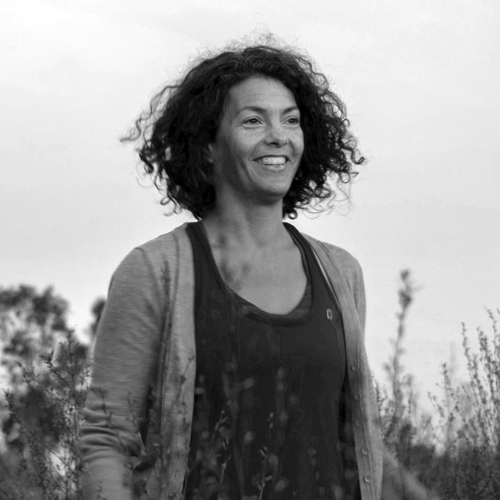
Rachael Mead
Austrialia
chlorophyll and casein, an ecopoetry collection
This collection comprises a linked suite of ecopoems that explore and distil the valley’s rich cultural history, the ecology of the region and the interconnections that exist between the cheesemaking process and the landscape. Through form, content and sensory observation, these poems bear witness to the Taleggio Valley at this particular moment in time and strive to evoke an authentic sense of place, emphasising ecological connectivity and the interdependence of culture, tradition and landscape.
Rachael Mead is a poet, short story writer and arts critic living in South Australia. She has an Honours degree in Classical Archaeology, a Masters in Environmental Studies and a PhD in Literature from the University of Adelaide. Her poetry collections include The Flaw in the Pattern (UWAP 2018), The Sixth Creek (Picaro Press 2013) and Sliding Down the Belly of the World (Wakefield Press 2012). She has a collection of short fiction forthcoming in 2020.
Austrialia
chlorophyll and casein, an ecopoetry collection
This collection comprises a linked suite of ecopoems that explore and distil the valley’s rich cultural history, the ecology of the region and the interconnections that exist between the cheesemaking process and the landscape. Through form, content and sensory observation, these poems bear witness to the Taleggio Valley at this particular moment in time and strive to evoke an authentic sense of place, emphasising ecological connectivity and the interdependence of culture, tradition and landscape.
Rachael Mead is a poet, short story writer and arts critic living in South Australia. She has an Honours degree in Classical Archaeology, a Masters in Environmental Studies and a PhD in Literature from the University of Adelaide. Her poetry collections include The Flaw in the Pattern (UWAP 2018), The Sixth Creek (Picaro Press 2013) and Sliding Down the Belly of the World (Wakefield Press 2012). She has a collection of short fiction forthcoming in 2020.
clorofilla e caseina, una collezione di ecopoesie
Questa collezione comprende una serie di ecopoemi collegati, che esplorano e “distillano” la ricca storia culturale della valle, l'ecologia della regione e le interconnessioni che esistono tra il processo di produzione del formaggio e il paesaggio. Attraverso la forma, il contenuto e l'osservazione sensoriale, queste poesie testimoniano la Val Taleggio in questo particolare momento e si sforzano di evocare un autentico senso del luogo, sottolineando la connettività ecologica e l'interdipendenza tra cultura, tradizione e paesaggio.
Rachael Mead è una poetessa, scrittrice di racconti e critica d'arte che vive nell’Australia del Sud. Ha una laurea con Lode in Archeologia Classica, un Master in Studi Ambientali e un dottorato in Letteratura presso l'Università di Adelaide. Le sue raccolte di poesie includono The Flaw in the Pattern (UWAP 2018), The Sixth Creek (Picaro Press 2013) e Sliding Down the Belly of the World (Wakefield Press 2012). La sua prima collezione di racconti brevi verra’ pubblicata nel 2020.
 Art is implicated and has a role to play in structuring space for imagining and practicing alternatives, even if they’re super small-scale. That was one of the things I really appreciated at NAHR: the reminder that small-scale actually is incredibly productive.
Art is implicated and has a role to play in structuring space for imagining and practicing alternatives, even if they’re super small-scale. That was one of the things I really appreciated at NAHR: the reminder that small-scale actually is incredibly productive.Reference: Rigg, S. (2020, 17 July 2020)NAH_Stories/Interviewer: Katie de Bari. NAH_Stories, Nature, Art & Habitat Residency.
Siobhan Rigg
Rumination and Collected Action Rumination and Collected Action
This project explores Val Taleggio from the perspective of the first steps in the chain of cheese production – the pastures and grazing animals. Grass and cultures are the source of energy that drives the cheese chain. But the tastes and agency of many actors drive decisions at each step, shaping the systems and landscape of the valley in small and large ways. In this context, the language of policy feels disconnected from the ways the actors within the cheese chain make decisions for themselves. In Rumination and Collected Action, the grasses, herbs and associated plants of the pasture push back - exploring the possibilities of sovereignty and political representation without independence and writing their words in pigment produced from their bodies.
Siobhan Rigg is a Washington, DC-based interdisciplinary artist whose creative work and research interests center on how complex issues are formed from the ways that lived spaces and relationships connect with mediated information and virtual encounters. Rigg’s creative and research interests center on the social and environmental histories of particular places and stories and their entrance into the political sphere.
Rumination and Collected Action Rumination and Collected Action
This project explores Val Taleggio from the perspective of the first steps in the chain of cheese production – the pastures and grazing animals. Grass and cultures are the source of energy that drives the cheese chain. But the tastes and agency of many actors drive decisions at each step, shaping the systems and landscape of the valley in small and large ways. In this context, the language of policy feels disconnected from the ways the actors within the cheese chain make decisions for themselves. In Rumination and Collected Action, the grasses, herbs and associated plants of the pasture push back - exploring the possibilities of sovereignty and political representation without independence and writing their words in pigment produced from their bodies.
Siobhan Rigg is a Washington, DC-based interdisciplinary artist whose creative work and research interests center on how complex issues are formed from the ways that lived spaces and relationships connect with mediated information and virtual encounters. Rigg’s creative and research interests center on the social and environmental histories of particular places and stories and their entrance into the political sphere.
Ruminazione e azione di raccolta Rumination and Collected Action
Questo progetto esplora la Val Taleggio dal punto di vista delle prime fasi della catena di produzione del formaggio: i pascoli e gli animali al pascolo. L'erba e le culture sono la fonte di energia che guida la catena del formaggio. Ma i gusti e l'azione di molti attori influenzano le decisioni ad ogni passo, modellando i sistemi e il paesaggio della Valle con interventi piccoli e grandi. In questo contesto, il linguaggio della politica si percepisce distaccato dal modo in cui gli attori all'interno della catena del formaggio prendono decisioni per se stessi. In Ruminazione e azione raccolta, le erbe e le piante dei pascoli rilanciano - esplorando le possibilità di sovranità e rappresentanza politica interdipendente, scrivendo le loro parole con pigmenti prodotti dai loro stessi corpi.
Siobhan Rigg è un’artista interdisciplinare di Washington, DC il cui lavoro creativo e gli interessi di ricerca si concentrano su come le questioni complesse sono influenzate dai modi in cui gli spazi vissuti e le relazioni si connettono con informazioni mediate e incontri virtuali. Gli interessi creativi e di ricerca di Rigg si concentrano sulle narrazioni sociali e ambientali di luoghi e storie particolari e sul loro ingresso nella sfera politica.
2019 Alt. Residents
Floris van Der Kleij, Interdisciplinary Designer / Amsterdam, The NetherlandsMeg Buzzi and Mia Pond, Interdisciplinary Artists
Yulia Shtern, Artist / Verona, Italy
Sal Sidner, Artist / Miami, USA
2019 Visitors
Ecopoetry Workshop
Simon Eales, SUNY Buffalo / Buffalo (NY)
Courtlin Byrd SUNY Buffalo / Buffalo (NY)
Brent Cox, SUNY Buffalo / Buffalo (NY)
The eco-poetry workshop was a two-week gathering of poets that were working and thinking about the environment, and we used it as an opportunity to really try and immerse ourselves in the natural history, the history of Val Taleggio and Sottochiesa, and do communal work together, communal exercise, communal writing, explore the region and try and really situate ourselves in that space. And what came from it was a lot of really wonderful work by all of the participants.
Reference: Cox, B. (2020, 14 October 2020) NAH_Stories: Brent Cox/Interviewer: L. Coleman. NAH_Stories, Nature, Art & Habitat Residency.
The beautiful remnants of the centuries [in the valley]. They remind us that life goes on.
Reference: Sidner, S. (2020, 31 December 2020) NAH_Stories/Interviewer: Katie de Bari. NAH_Stories, Nature, Art & Habitat Residency.
NAH_Worskhop June
Patrizio Musitelli, Agronomist / Valle Brembana (BG), Italy
Luca Mangili, Flora Alpina Bergamasca / Bergamo, Italy
Elena Eustacchio, Naturalis, Flora Alpina Bergamasca / Bergamo, Italy
Enrico Bassi, Naturalist and Ornithologist / Parco Naizonale dello Stelvio, Bormio, Italy
Stefano Torriani, Naturalist / San Pellegrino Terme (BG), Italy
Marta Ratti Carrara, GAL / Valle Brembana (BG), Italy
Lucia Morali, GAL / Valle Brembana (BG), Italy
Marta Torriani, Assoc. S. Matteo le 3 Signorie / Branzi (BG), Italy
Alvaro Ravasio, Consorzio Tutela Strachinunt / Vedeseta (BG), Italy
Lorenzo Sangiovanni, consorzio Tutela Taleggio / Treviglio (BG), Italy
Lorenzo Berlendis, Slow Food Italia / Valli Orbiche, Italy
Michele Corti, Agronomist / Milano, Italy
Letizia Bindi, Anthropologist / Università del Molise, Italy
Gabi Scardi, NAHR President, Art Curator / Milano, Italy
Monica Aresi, Architect / Bergamo, Italy
Gianluca Gelmini, Architect / Pratolongo (BG), Italy
Chiara Gamba, Ecomuseo Val Taleggio / Taleggio (BG), Italy
